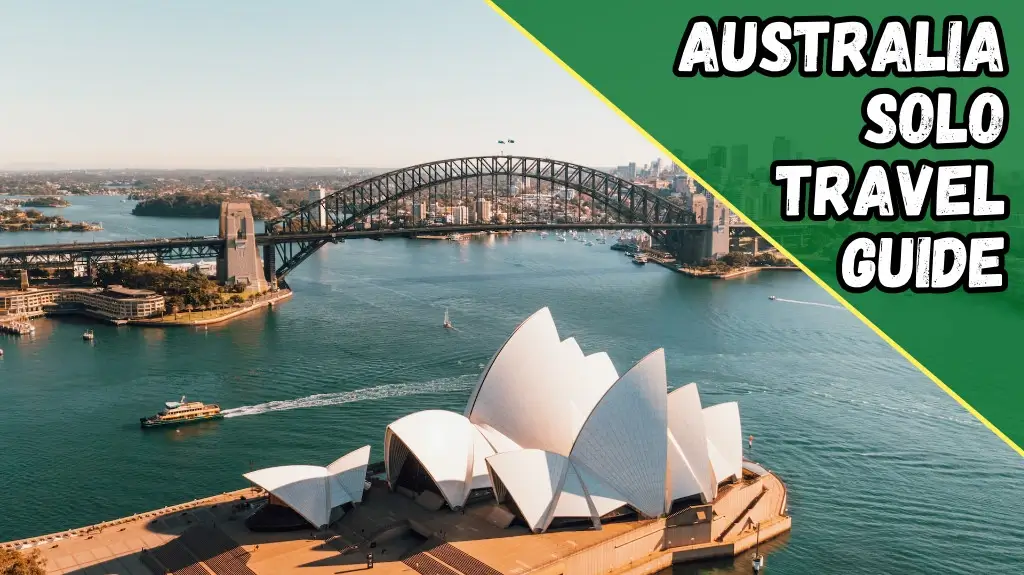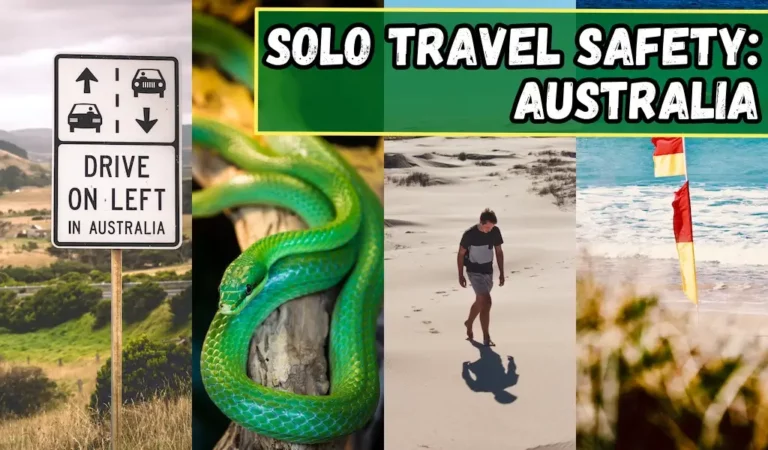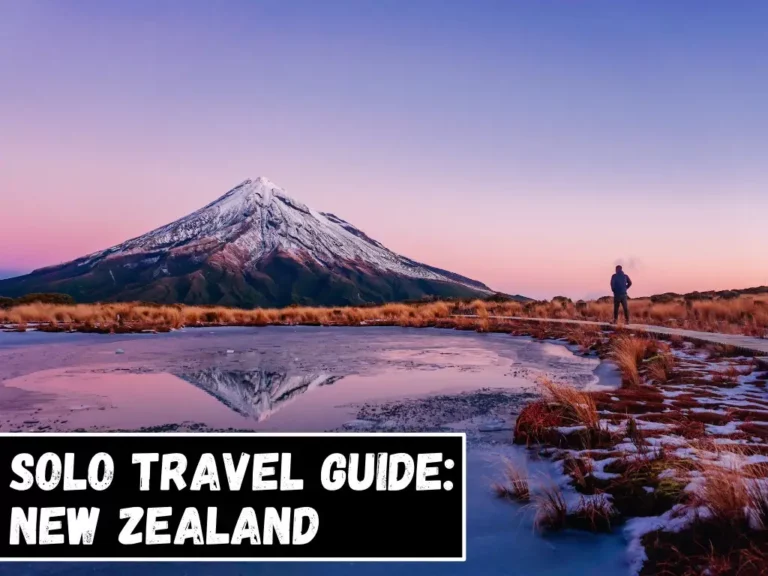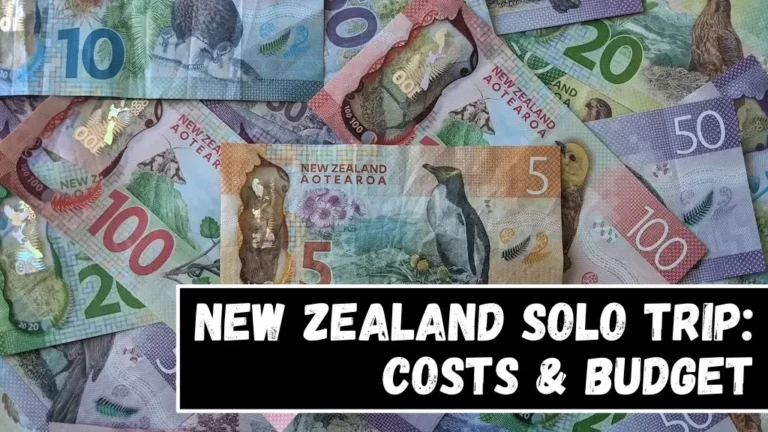Australia Solo Travel Guide and Adventure Itinerary (2023)
Australia is one of the most popular and diverse solo travel destinations in the world. Head Down Under and you can cuddle a koala, surf the Gold Coast, dive the Great Barrier Reef, catch the sunrise at Uluru and so much more!
In this ultimate guide to solo travel in Australia, you’ll find everything you need to plan the Ozzie adventure of a lifetime.
All the advice is tailored to people who will be travelling alone in Australia, including: the best destinations, things to do and see, accommodation, transport, costs, a packing list, safety tips and much more.
After Australia, why don’t you continue on to solo travel New Zealand!
Overview of Solo Travel in Australia
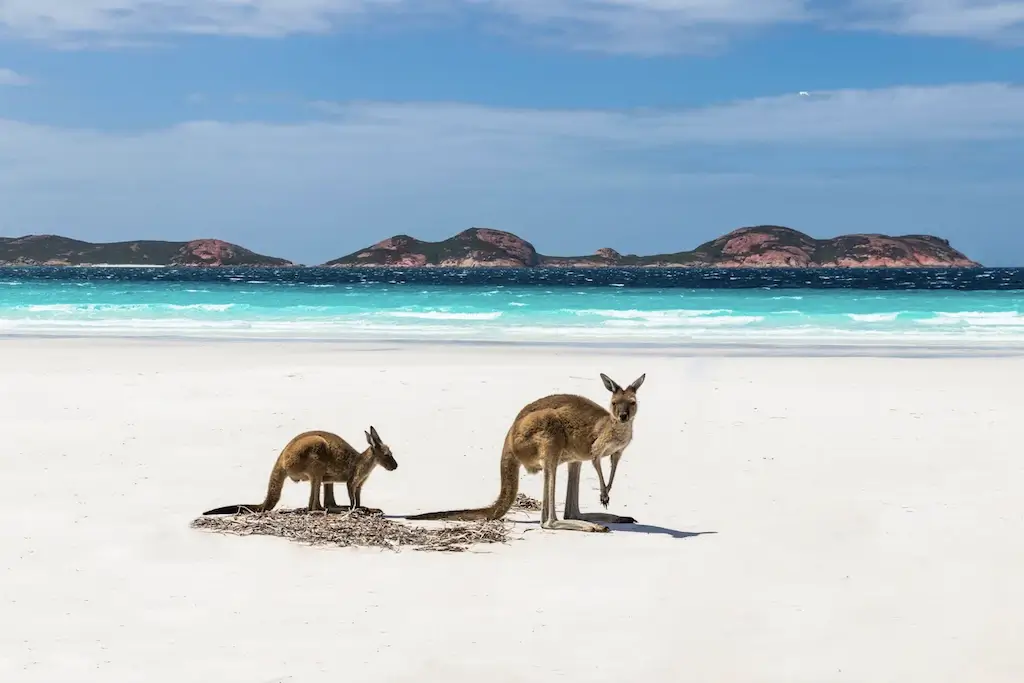
Australia is one of the best solo travel destinations for both first-timers and experienced travellers.
People love to travel solo in Australia because it is safe, easy to navigate and has an array of famous sites such as Sydney, Bondi Beach, Melbourne, Uluru, the Great Barrier Reef, the Great Ocean Road and Kakadu. You will enjoy the relaxed environment and find it easy to make friends with the locals and other solo travellers.
The most popular solo travel route in Australia is the East Coast (Melbourne – Sydney – Byron Bay – Gold Coast – Cairns). However, if you have enough time, you may also want to travel into The Outback (Uluru, Kakadu, Broome, etc.)
Solo travel around Australia is particularly popular amongst young people (aged 18-30) (both male and female) thanks to its party atmosphere and visa options. However, it is also popular amongst older solo travellers (50+), sometimes referred to as ‘Grey Nomads’ in Australia (famous for travelling around in campervans and motorhomes).
It is easy to find accommodation all over Australia, with hostels and hotels found in every major town and city. It is also easy to arrange transport, with coaches travelling around most of the country and airports in major cities and large regional towns.
Many people choose to solo travel in Australia during summer (December – February), because they think that the beaches will be more enjoyable in the heat. However, the cooler seasons are a great time to solo travel around Australia because the Northern Tropics are more accessible and it snows in the alpine regions of south-east Australia.
Note that Australia can be an expensive country to solo travel in. It is also a large place and you will need at least 1-3 months if you want to see most of the highlights.
Australia Solo Travel Itinerary (1-6 Months):
4 Best Places to Travel Alone
East Coast of Australia (1-3 Months)
Victoria (1 Week to 1 Month)
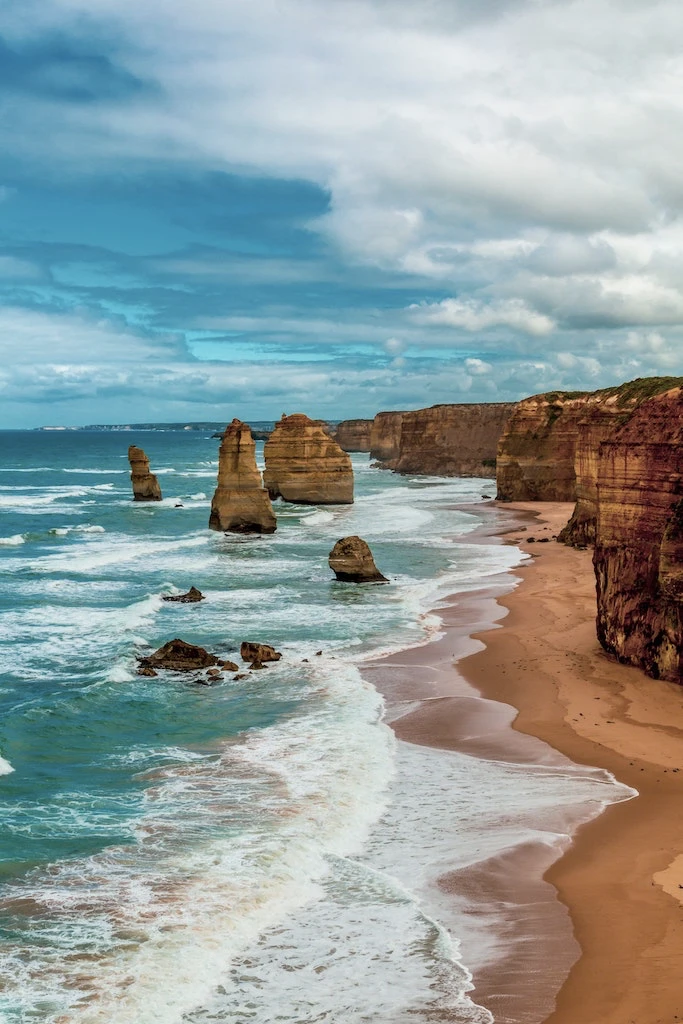
Victoria is the second most populous state and is located in the southeast of the country. It is famous for its buzzing metropolitan lifestyle, wine regions, natural wonders and sporting events.
The capital of Victoria is Melbourne. You can fly to Melbourne from many international airports around the world. You can also fly domestically or catch a coach or train from Sydney, Adelaide or Brisbane. Many people start their solo travel in Australia here.
Melbourne is famous for being a cultural hub of Australia and one of the most liveable cities in the world. Wander the laneways and admire the street art before stopping for a coffee (voted the best in the world). Then at night, enjoy a craft beer at a local brewery before hitting the nightclubs or catching a sporting event.
To the west of Melbourne is the Great Ocean Road, one of the most renowned coastal drives in the world. Along the way, stand in awe and admire geological wonders such as the Twelve Apostles and Loch Ard Gorge. You’ll also get to explore rainforests, waterfalls and Bell’s Beach (the home of surfing in Australia).
Throughout the Victorian Countryside and the Mornington Peninsula, you will find vineyards responsible for producing some of the world’s best Chardonnay, Shiraz, and Pinot Noir. And when you’re not wining and dining, you can soak away the afternoon in mineral hot baths or cast a line on the Murray River.
New South Wales (1 Week to 1 Month)
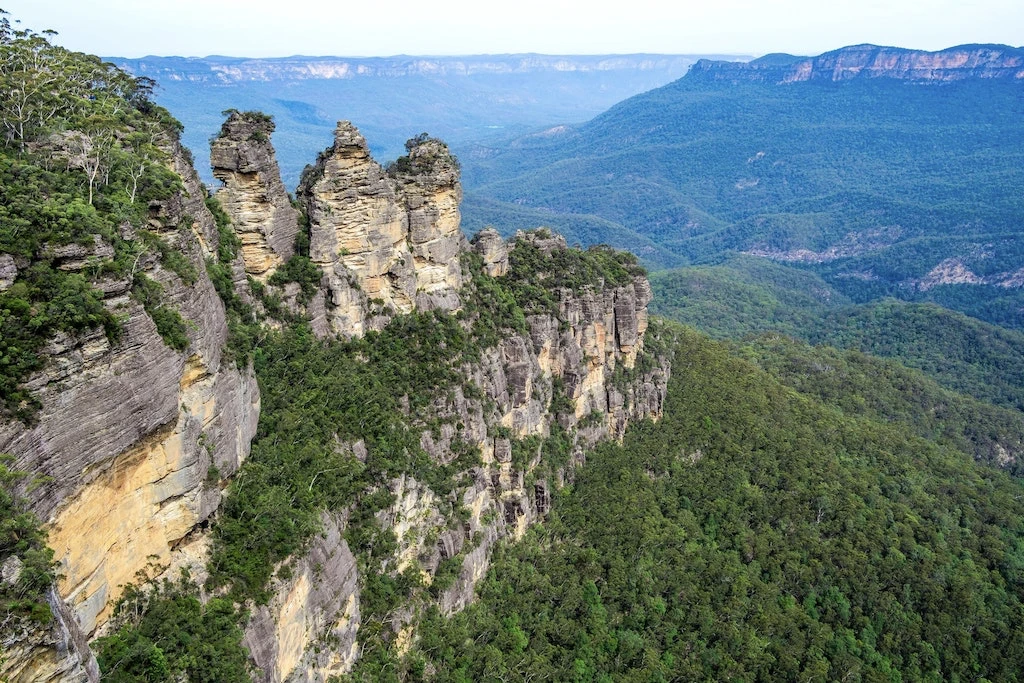
New South Wales is the most populous state in Australia and is located on the East Coast. It is famous for its iconic beaches, monumental landmarks and mountain ranges.
The capital of New South Wales is Sydney. You can fly to Sydney from many international airports around the world. You can also fly domestically or catch a coach or train from Melbourne or Brisbane.
Sydney is known for its famous landmarks such as the Sydney Harbour Bridge and Opera House. It is also home to the famous Bondi Beach and Manly Beach. To the west of Sydney are the Blue Mountains, where you can see towering waterfalls and steep cliffs amongst the blue haze of the eucalyptus forests.
The northern coastline of NSW is lined with long, sandy beaches. The most famous of these is the celebrity hotspot Byron Bay, a hippy community that has become a playground for backpackers and wealthy travellers alike. When you’re not learning to surf, just kick back and relax or hit one of the nightclubs.
In southern NSW are the Snowy Mountains and Kosciuszko National Park, home to the highest peak in Australia and bush legends such as the Man From the Snowy River. Visit in the winter and you can ski or snowboard at large resorts such as Perisher and Thredbo.
Queensland (2 Weeks – 1 Month)
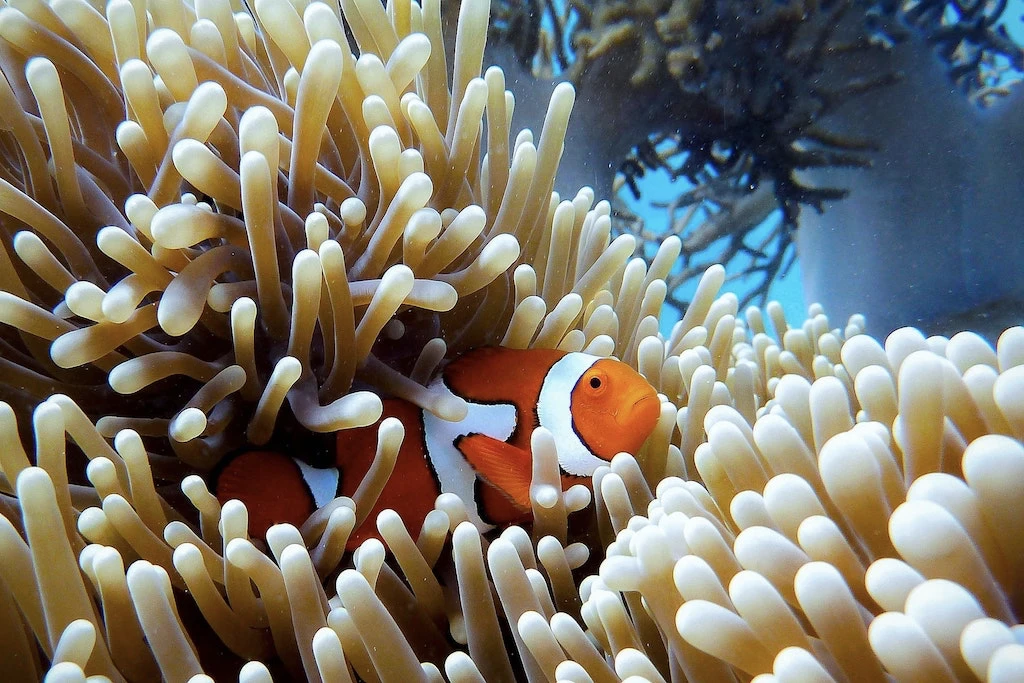
Queensland is the most popular destination for solo travel in Australia. This tropical paradise is famous for its sandy beaches, tropical rainforest, vibrant reef and party cities.
The capital of Queensland is Brisbane. You can fly to Brisbane from many international airports around the world. You can also fly domestically or catch a coach or train from Sydney or Melbourne. It is another great starting point for solo travel in Australia.
Brisbane is famous for its sub-tropical climate, riverside walkways, alfresco dining and annual Cockroach Races. It is also close to Stradbroke Island, a whale-watching paradise!
An hour from Brisbane is the Gold Coast, where solo travellers like to party by night and then recover on the beach by day. Here, you will find strips of nightclubs, bars and theme parks filled with young people looking for a good time. Some of the famous surf beaches include Surfer’s Paradise and Burleigh Heads.
A few hours further north is the Sunshine Coast, a more-upmarket beach destination with luxurious hotels and popular hostels. Visit Steve Irwin’s Australia Zoo, where you can hand feed kangaroos, pat a koala and watch the croc feeding show. Then catch a ferry to Fraser Island (K’Gari), where vivid blue lakes, rainforests and sand dunes adorn the world’s largest sand island.
In the Tropical North of Queensland, you will find cities such as Townsville and Cairns – both gateways to the Great Barrier Reef. Snorkel with turtles and visit heavenly spots such as Hamilton Island and Magnetic Island. Then, delve deep into the oldest rainforest in the world, the Daintree Rainforest.
Tasmania (2 Weeks)
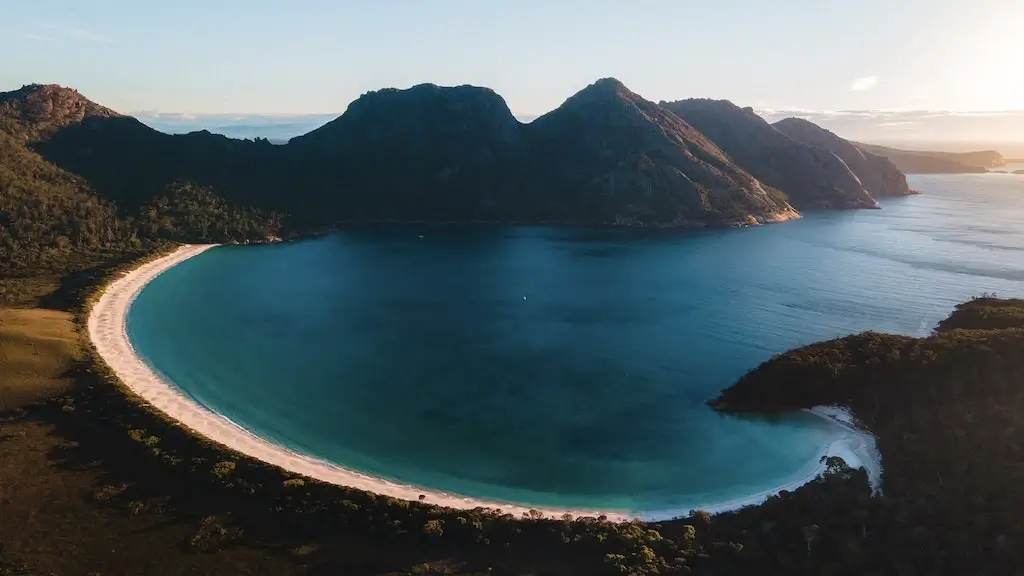
Tasmania is an island state to the south of Australia. Whilst it may not be the most popular place to solo travel in Australia, it is perhaps the most underrated. Tasmania is famous for its spectacular scenery, convict and Aboriginal history, unique wildlife and cultural attractions.
The capital of Tasmania is Hobart. You can fly to Hobart from all of the major airports in Australia. Alternatively, you can catch a ferry to Tasmania from Melbourne.
Hobart is famous for its cultural attractions, such as the Salamanca Markets, which hosts over 300 artisan stalls every Saturday. You should also ride the ferry to the MONA Art Museum, the largest privately-funded museum in the Southern Hemisphere.
The East Coast of Tasmania is spoiled with amazing seafood and scenery, including sights such as Wineglass Bay and the Bay of Fires. You can also visit Port Arthur, which was once a brutal convict settlement but is today one of the best museums in Australia.
The West Coast of Tasmania is wild and rugged but beautiful. Climb Cradle Mountain and look out of vast swathes of remote Australian bushland before circling the crystal clear waters of Lake St Clair. And don’t miss out on the Tasmanian Devil sanctuary!
Western Australia (1-2 Months)
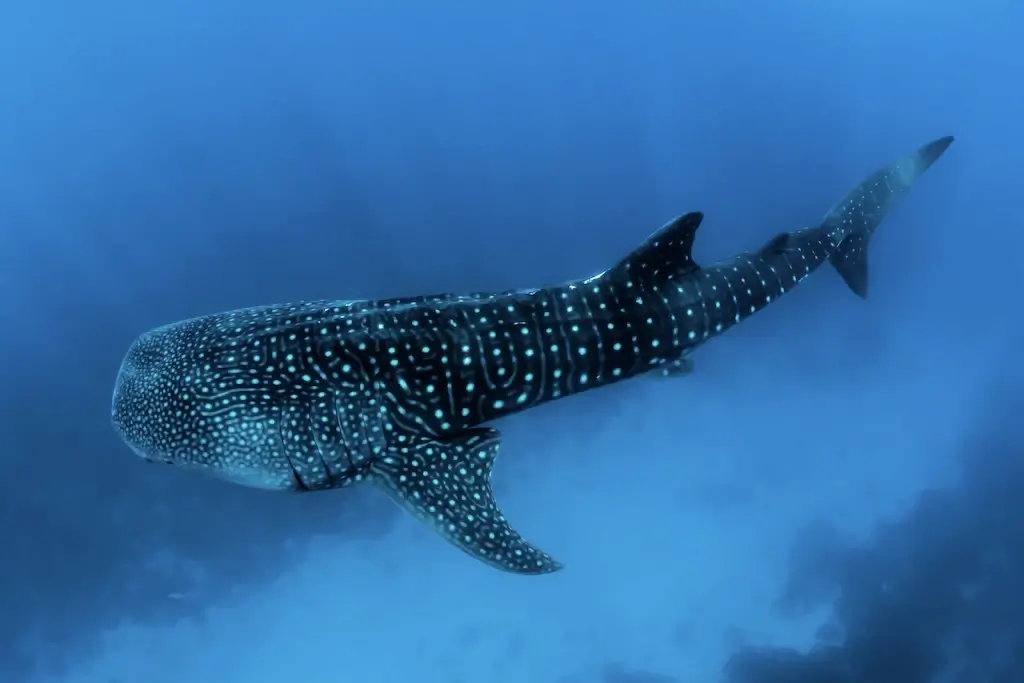
Western Australia is the largest state in Australia (about 3.5 times the size of Texas). It is less popular than the East Coast but is remarkable in its own right. It is famous for its rugged coastline, coral reefs and desert interior.
The capital of Western Australia is Perth. You can fly to Perth from all of the major airports in Australia. Otherwise, it is several days’ drive from Adelaide, Melbourne or Sydney.
Perth is famous for Cottesloe Beach and is a gateway to Rottnest Island, home of the Instagram-famous Quokka (a cute little kangaroo). To the south of Perth is the historic city of Fremantle and the Margaret River surf region. To the north is the Pinnacles Desert, where strange limestone pillars that are 30,000 years old rise out of the sands.
The Western Australian Coastline is vast and takes weeks to travel, but it is host to internationally-renowned marine attractions. Feed dolphins on the shore in Monkey Mia, swim with the whale sharks at Ningaloo Marine Park and ride a camel along Cable Beach in Broome.
The Western Australian Outback is even more vast but is equally remarkable. Explore the red soils, ginormous gorges and hidden swimming holes around Kalbarri National Park, Karijini National Park and the Kimberley. Then see Wave Rock before crossing the desert via the Nullarbor Plain, the longest straight road on the planet (147km/91mi).
The Outback (1 Month)
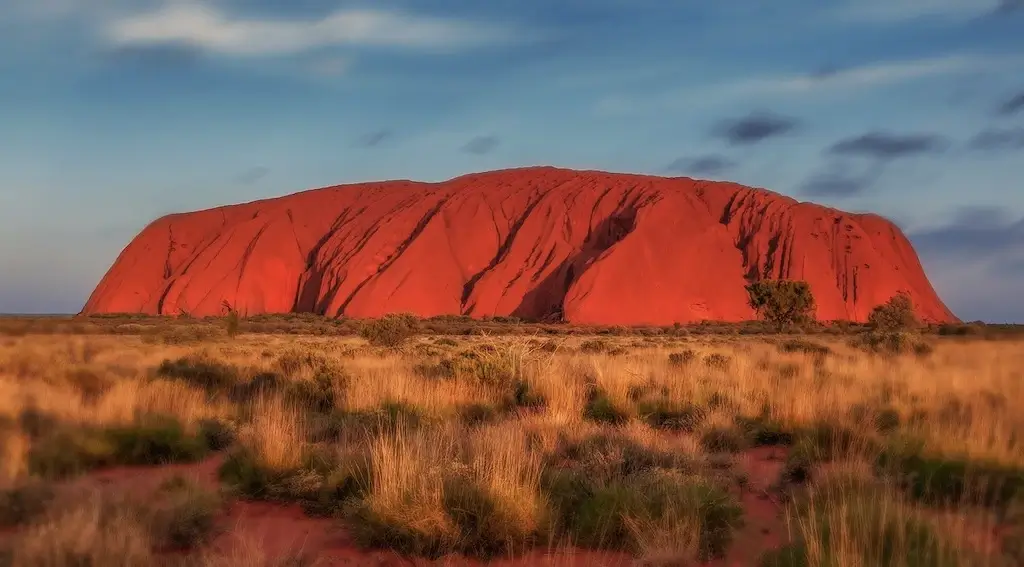
The Australian Outback may seem dry and deserted but it is one of the most popular destinations for solo travel in Australia. Known as the Red Centre, it is famous for its amber sands, Aboriginal culture, natural wonders and wildlife.
Most people start their Outback journey in the city of Adelaide, which is surrounded by internationally-renowned wine regions such as the Barossa Valley. Nature lovers will want to see the wildlife on Kangaroo Island or cage dive with Great White Sharks off of Port Lincoln.
In the centre of Australia is the country’s most iconic landmark, Uluru, which stands 348m tall. Not far away are the equally impressive Kata Tjuta and Kings Canyon. And you can’t visit the Outback without stopping in the quirky town of Coober Pedy, where the people live underground to escape the heat.
In the north of Australia is Darwin, where you can watch jumping crocodiles on the nearby Adelaide River. And don’t miss Kakadu National Park, where you can see ancient Aboriginal rock art, swim amongst breathtaking gorges, cruise around billabongs and soak in thermal hot springs.
Related Post
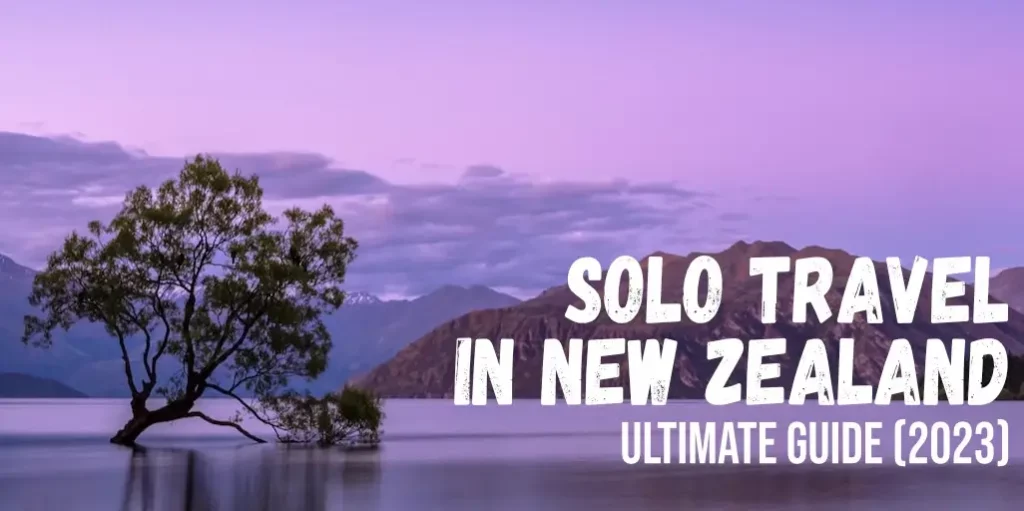
Australia Solo Travel Itinerary:
10 Best Things to Do and See
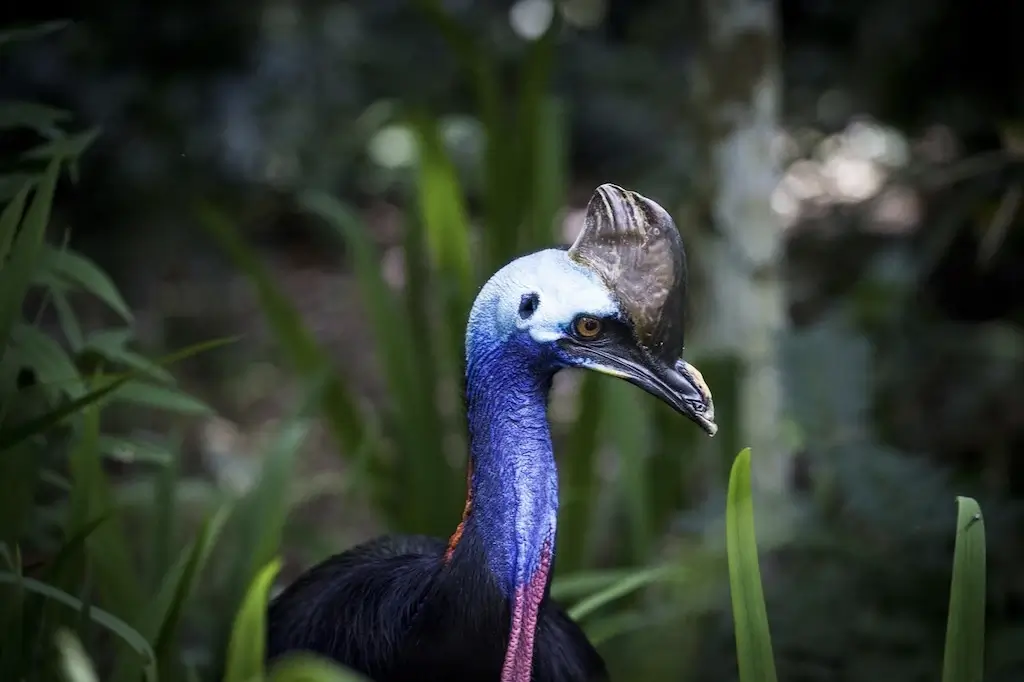
1. The Daintree Rainforest
Explore the world’s oldest tropical rainforest (180 million years old) and the place that Sir David Attenborough once called “the most extraordinary place on Earth.”
Delve into the shadowy depths of the Daintree Rainforest, following the boardwalks as they twist and turn underneath the lush canopy and dangling vines. Listen to the sounds of nature and keep an eye out for prehistoric wildlife – including the giant cassowary and crunching saltwater crocodiles.
After all of that adventure, solo travellers can soak the day away in the trickling waters of Mossman Gorge or Masons Swimming Hole.
2. The Great Barrier Reef
Dive or snorkel on the Great Barrier Reef, which spans over 2,300km of Australia’s eastern coastline and is the largest living organism on Earth.
Swim between vibrant corals that are 20 million years old and submerge yourself amongst the 1,600 species of fish, turtles, whales and dolphins that call this place home. Then dry yourself off on the soft and sandy shores of havens like Hamilton Island and Green Island.
Just be aware that summer is stinger season on the Great Barrier Reef and temperatures are scorching. It is best for solo travellers to visit during the winter when temperatures are still warm but pleasant and there are no stingers in the water.
3. Byron Bay
Chill out in Australia’s most famous beach town – Byron Bay. This slice of coastal bliss has become internationally renowned for its stunning beaches, laidback lifestyle and fun nightlife.
Throw yourself into the hippy lifestyle and spend time doing yoga and pilates on the beach with the locals and other solo travellers. Pick up a board and learn to surf on the beautiful stretch of sand that is Main Beach.
Take a sunset walk to Cape Byron Lighthouse on mainland Australia’s most easterly point. And then party the night away at local pubs and nightclubs like Stone & Wood or Cheeky Monkeys!
4. Sydney
Sydney is the largest and most famous city in Australia thanks to its iconic attractions. Most solo travellers spend at least a week here seeing all the sights.
Climb the Sydney Harbour Bridge on a guided tour before catching a gig at the Opera House next door. Kick back on Bondi Beach before following the coastal walk around to Coogee Beach. Then ride the ferry to Taronga Zoo, where you can snap photos of exotic and native wildlife with the city skyline in the background.
Catch the train for a day trip to the UNESCO World-Heritage Blue Mountains, an hour west of Sydney. Take the walking trails to sights such as the 230m tall Katoomba Falls and The Three Sisters rock formation before visiting quaint villages such as Leura.
5. Rottnest Island
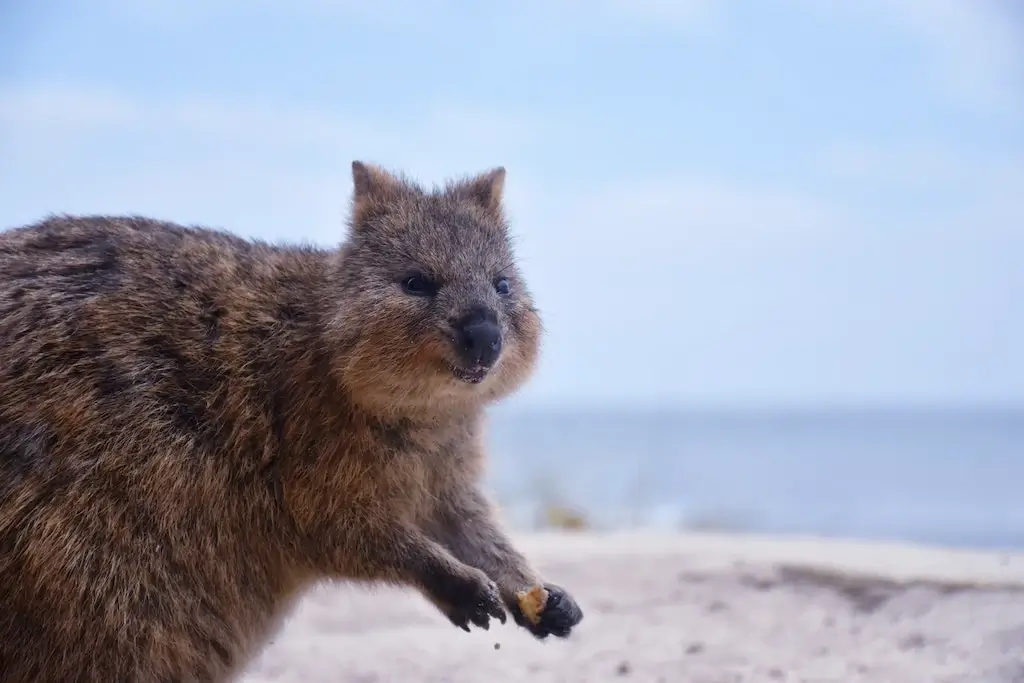
Enjoy a quick ferry ride from Perth to Rottnest Island, a slice of paradise with pristine beaches, abundant marine life and a famous little breed of wallaby known as the Quokka.
There are no cars allowed on Rottnest Island, so hire a bike and enjoy the freedom of peddling around the island. As you go, stop on one of the 63 white sand beaches and snorkel amongst the bright coral reefs – home to over 400 species of fish and fur seals.
Uncover the history of the island at Wadjemup Museum, where you can learn about the local Aboriginal heritage and how over 4,000 Aboriginal men and boys were imprisoned on the island from 1838 to 1931.
Finally, finish your visit by taking a selfie with a Quokka. You won’t find a cuter or friendlier creature when solo travelling around Australia!
6. Melbourne
Meander around Melbourne, a cultural hub for coffee, art, fashion, food and sport. Many people start their solo travel in Australia here and make their way north along the Eastern Coast.
Find your way through the maze of laneways, each lined with its own array of al fresco restaurants, trendy cafes and vibrant street art. Get buzzed on the world’s best coffee, drink with other solo travellers in pubs around Fitzroy or Carlton and dance the night away at one of the famous nightclubs such as Revolver.
Need some rest? Relax amongst the peaceful grounds of the Royal Botanic Gardens, which hosts over 8,500 plant species. Then watch the sunset on St Kilda Beach or grab a photo of the colourful beach huts on Brighton Beach.
7. The Great Ocean Road
Cruise along the Great Ocean Road, one of the most scenic coastal drives in the world and a must-visit on any Australia solo travel itinerary. At 244km, it can be driven in as little as one day.
Start in the beach town of Torquay (an hour west of Melbourne), the surfing capital of Australia and host to the Australian National Surfing Museum. Then explore the fern gullies and waterfalls around Lorne, such as the 30m cascade that is Erskine Falls. And wander amongst the koalas in the treetops of Great Otway National Park.
Trace the craggy cliff tops as you wind your way around the edge of the mighty Southern Ocean. Stop at the many panoramic lookouts along the way and take in iconic sights such as Loch Ard Gorge, the London Bridge, the Grotto and the Twelve Apostles – a series of 45m (150ft) tall limestone pillars that rise out of waves below.
8. Kakadu National Park
Take a solo outback adventure into the Top End and discover the ancient wonders of World Heritage-listed Kakadu – Australia’s largest national park.
Walk amongst towering ochre bluffs, drive through tropical rainforests, cool off in swimming holes and admire the thundering waterfalls around Nitmiluk National Park.
Admire ancient Aboriginal rock art galleries (up to 20,000 years old), cruise the Yellow Water Billabong and soak in the thermal hot springs around Katherine.
But take note, the best time to visit Kakadu National Park is in the Dry Season (May – October) when it doesn’t rain as much and the roads are more accessible. However, the waterfalls can be amazing during the Wet Season (November – April).
9. Uluru
The middle of Australia is known as The Red Centre, where you will find the heart of the country and its culture – Uluru-Kata Tjuta National Park. If you have enough time, this is a must-visit on your Australia solo travel itinerary.
At 348 metres tall and 550 million years old, it’s no wonder why the monolithic Uluru is revered as a place of cultural and spiritual significance. Wake up early for some special sunrise photos before joining an Aboriginal guided tour and hearing their Dreamtime stories.
Don’t want to walk the full 9.4km around the base of the rock? Take a break and ride a camel around the red sands instead. And don’t miss nearby Kata Tjuta (The Olgas), massive rock domes that glow bright red at sunrise and sunset.
10. Ningaloo Reef
The Western Australia coastline is 12,895km long and adorned with remarkable attractions. One of the gems that you must add to your Australia solo travel itinerary is Ningaloo Reef.
You will find the UNESCO World Heritage-listed Ningaloo Reef where the red soil of the outback runs into the turquoise waters of the Indian Ocean. Swim, snorkel and kayak through the calm waters and admire the manta rays, turtles and humpback whales that call this place home.
Ningaloo is also one of the best places in the world to see Whale Sharks each year (between March and July). Join a guided tour and watch as these gentle giants glide past you in the big blue.
Australia Solo Travel Itinerary:
Accommodation
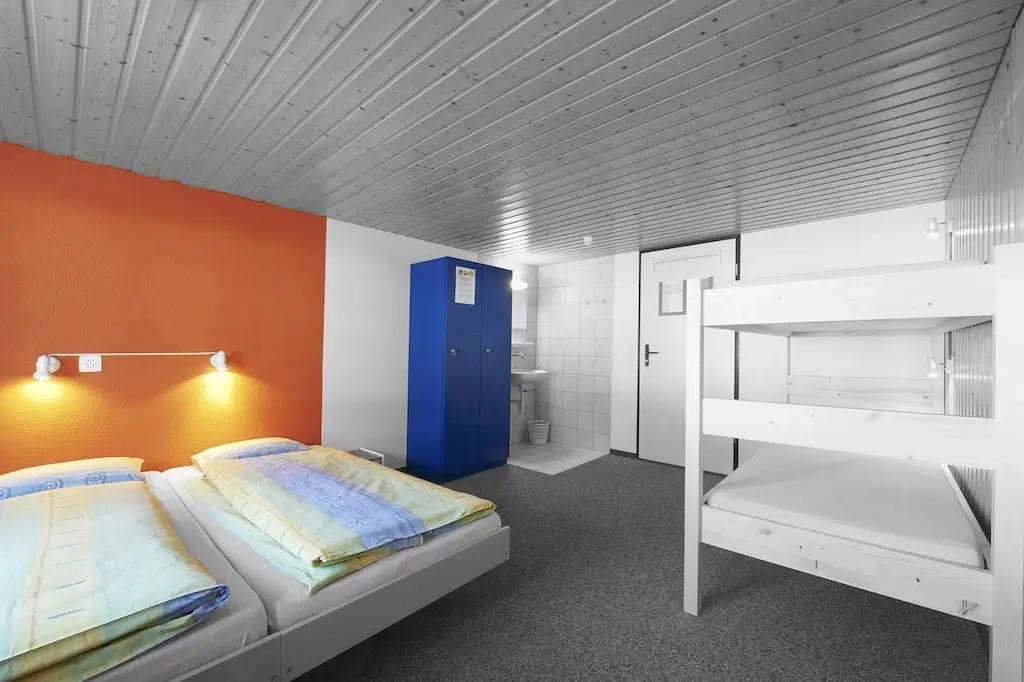
Solo travellers have four main accommodation options in Australia: camping, hostels, motels/hotels and Airbnb.
Most people generally stay in hostels and motels when they solo travel in Australia.
Camping
Solo travellers can find designated camping spots all around Australia. The best and most scenic campsites tend to be in National Parks and holiday parks.
National Park campsites can cost anywhere from $0 – $20 per person per night. Holiday park campsites can cost anywhere from $20 – $75 per person per night.
The cheaper the campsite, the more basic the facilities provided. A standard campsite should provide toilets, showers, water and picnic tables.
Camping is a fun option for adventurous solo travellers who want to be amongst nature and save money on accommodation. However, you will need to carry a tent or travel in a campervan.
Some of Australia’s best camping spots include:
- Booderee National Park – Jervis Bay, NSW
- Great Sandy National Park – Fraser Island, QLD
- Ayers Rock Resort – Petermann, NT
- Riba’s Underground Camping – Coober Pedy, SA
- Bay of Fires – East Coast, Tasmania
Hostels
The majority of solo travellers and backpackers in Australia stay at hostels. You can find hostels in most tourist destinations around the country.
The cost of a bed in a hostel dorm room ranges from about $25 – $70 per night. The cost of a private room in a hostel ranges from about $70 – $175 per night.
The cost of hostel accommodation increases in popular destinations (particularly cities such as Sydney, Melbourne and the Gold Coast). Generally, dorm rooms with fewer beds also cost more.
Hostel accommodation is best for most solo travellers because it is affordable and a good way to make new friends. Women can also stay in female-only dorm rooms. However, hostels are not always as comfortable as motels or hotels.
Some of the most popular hostels for solo travel in Australia include:
- Gilligan’s Hostel – Cairns, QLD
- Bounce – Sydney, NSW
- The Mansion – Melbourne, VIC
- Nomads Hostel – Byron Bay, NSW
- Kimberley Travellers Lodge YHA – Broome, WA
Motels and hotels
Many solo travellers in Australia stay in motels or hotels. You can find motels and hotels in almost every city and town around the country.
The cost of an average motel or hotel room (3-4 stars) ranges from about $50 to $150 per night. However, luxurious hotel rooms can cost more than $250+ per night.
Motel and hotel accommodation is best for solo travellers who are willing to pay more for privacy and comfort. You may also have to use this option when visiting regional towns that don’t have hostels. However, it is harder to befriend fellow travellers in a motel or hotel compared to a hostel.
Popular motel and hotel chains in Australia include:
- Novotel
- Meriton
- Marriott
- Holiday Inn
- Rydges
- ibis
Airbnb
Some solo travellers in Australia may choose to use Airbnb. You can find Airbnb accommodation in every city and most towns around the country.
The average cost of an apartment or home on Airbnb ranges from $150 – $250 per night. However, some rentals can cost up to $500+ per night.
Airbnb is best for solo travellers who want to enjoy luxury, privacy and comfort. It can also be a good option if you plan to stay at your destination long-term. You may even choose to split the cost between a group of friends or fellow travellers.
Australia Solo Travel Itinerary:
Transport
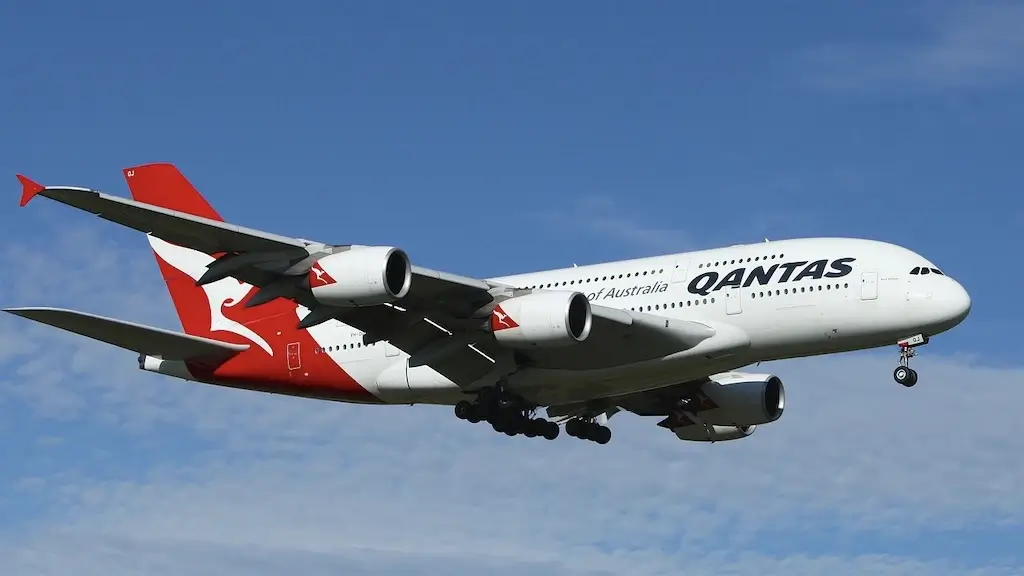
Australia is a large place and it can take days or even weeks to travel the long distances between major cities. Even the cities tend to be large in scale and you will often have to rely on public transport to get around.
It is best to break long journeys up into smaller parts by stopping in regional tourist destinations along the way.
Public Transport
You will find reliable and affordable public transport in all Australian cities and major towns. This includes trains, buses, trams and ferries.
The cost of using public transport in Australia ranges from about $4 – $8 per return trip.
When you solo travel in Australia, you can use public transport as an affordable way to get around the city and see local attractions. It tends to be comfortable and safe, with security cameras and guards.
Most of the major cities have their own card system for public transport. You can buy these cards at news agencies and top them up with credit via an app or online. You can then use the card to tap on/off when using buses, trains and ferries:
- Sydney – Opal card (alternatively, just use contactless payment).
- Melbourne – Myki card.
- Brisbane – Go Card (alternatively, just use contactless payment).
- Perth – SmartRider Card.
Uber and Taxi
Ubers and taxis are available in all major cities and many regional cities around Australia, including the Gold Coast, the Sunshine Coast, Cairns, Byron Bay and Alice Springs.
Ubers are more affordable than taxis in Australia and charge about $1.50 per km. Taxis charge about $2.50 per km.
When you solo travel in Australia, you may want to use Uber or taxis as a convenient but more costly alternative to public transport when commuting around the city.
Uber and taxis tend to be comfortable and safe. Check that your Uber driver has a good rating and familiarise yourself with the safety features on the app.
Coaches
There are a few long-distance coach services that solo travellers can use to travel between destinations in Australia.
The largest and most popular coach service for solo travel in Australia is Greyhound Buses. They can transport you all over the East Coast (including Sydney, Melbourne, Brisbane and Canberra) and the Outback (including Darwin, Alice Springs, Adelaide and Broome). Along the way, you can hop on and hop off to visit the smaller regional cities and towns.
You can buy a travel pass, which lasts for a limited amount of time and allows you to travel in any direction and get off at any stop. The East Coast Pass costs $249 and lasts for 30 days. The National Pass costs $349 and lasts for 120 days.
Coaches are one of the most popular and affordable ways to solo travel around Australia. However, it is slower and less comfortable than taking the train or a domestic flight.
Train
There are limited long-distance train services that solo travellers can use to travel between destinations in Australia.
The most popular train services run along the East Coast (between Melbourne, Canberra, Sydney, Brisbane and Cairns). These are relatively affordable for a solo traveller, with economy tickets costing:
- Melbourne – Sydney: $110 – $130
- Sydney – Brisbane: $110 – $130
- Brisbane – Cairns: $275 – $370
These trains also offer sleeper coaches for about an extra $100-$150 per person.
There are also a few famous train services that run through the Outback, such as The Indian Pacific (Sydney to Perth) and The Ghan (Adelaide to Alice Springs to Darwin). However, these are expensive and luxurious journeys that most people consider once-in-a-lifetime experiences. A full journey can cost anywhere from $2150 – $4,200 per person.
Trains are a comfortable and easy way to solo travel around the East Coast of Australia. However, they are slightly more expensive than catching a coach.
Flights
The most popular way to solo travel in Australia is via domestic flight.
The average cost of a domestic flight for a solo traveller in Australia depends on the destination, distance and season:
- Shorter flights along the East Coast (Melbourne, Sydney, Byron Bay, Brisbane, Cairns) may only cost around $100 – $250 per person one way (economy class).
- Longer flights and regional destinations (Perth, Broome, Alice Springs) may cost more, at around $300-$500 per person one way (economy class).
You also have to consider the cost of baggage. Most domestic airlines in Australia do not include baggage in the ticket price and you will have to pay an extra fee of about $25 – $50 per flight.
The most popular domestic airlines in Australia include:
- Jetstar (most affordable)
- Virgin Australia (second most affordable)
- Qantas (most reliable)
- Rex (best for regional flights)
Domestic flights are the fastest and most comfortable way to solo travel in Australia. However, flying is more expensive than some other options and you won’t get to see as much of the countryside.
Car and campervan rental
Car rental is another popular way to solo travel in Australia.
The cost of hiring a car in Australia depends on the type of car you hire, your age and any extras:
- Aged 18-21: Most car rental agencies won’t let people younger than 21 hire a car.
- Aged 21-30:
- It costs an average of $75 per day to hire a small car such as a Hyundai i30 or a Toyota Yaris.
- It costs an average of $100 per day to hire a medium or large car such as a Toyota Camry or Kia Cerato.
- Aged 30-65:
- It costs an average of $50 per day to hire a small car such as a Hyundai i30 or a Toyota Yaris.
- It costs an average of $75 per day to hire a medium or large car such as a Toyota Camry or Kia Cerato.
The most popular car rental companies include Hertz, Enterprise, Europcar, Budget and Avis.
Car and campervan rental is the most flexible way to solo travel in Australia. You can adjust your Australia solo travel itinerary to your liking and see more of the country. However, it is more costly than other transport options.
Australia Solo Travel Itinerary:
Best Time to Visit Australia
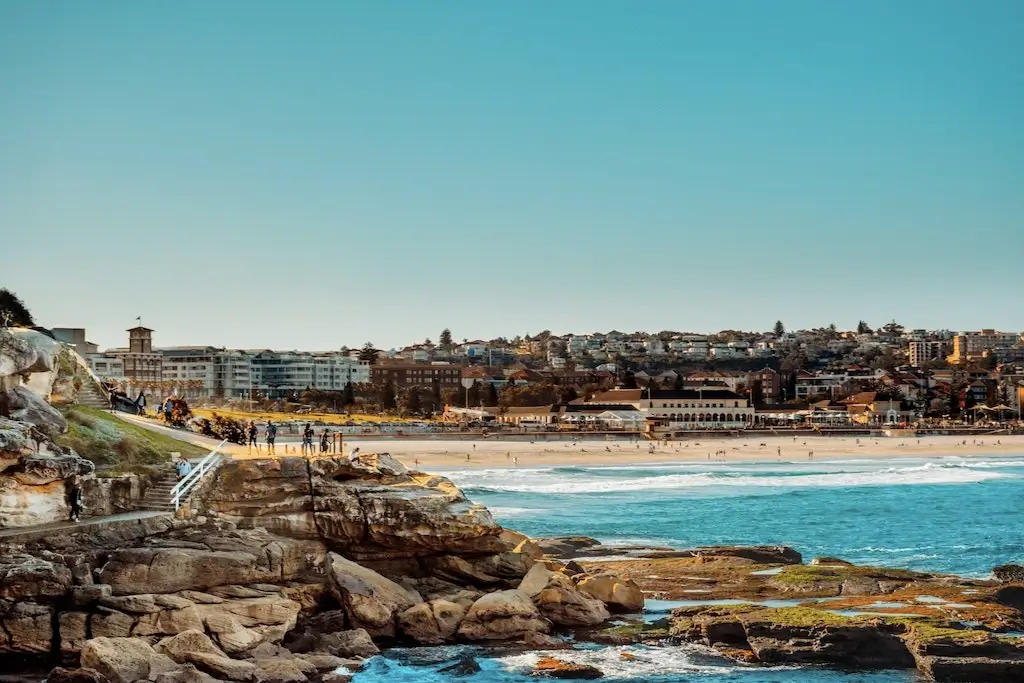
The best time to solo travel in Australia is between Autumn and Spring because temperatures are reasonable, tourist crowds are minimal and the Tropical North (i.e. Kakadu and the Great Barrier Reef) is more accessible.
The worst time to solo travel in Australia is summer because temperatures can be scorching, tourist crowds are peaking and parts of the country are inaccessible due to the wet season.
Summer
Summer in Australia lasts from December – February.
During summer, daytime temperatures across Australia can range from 18℃ (64℉) to more than 45℃ (113℉).
If you solo travel in Australia during summer, try to stick to the southern parts of the country where the climate is cooler. Avoid the Outback and the wet season in the Northern Tropics.
Good solo travel destinations in summer include the Great Ocean Road, Bondi Beach, Byron Bay, the Gold Coast and the Sunshine Coast.
Many tourists travel to Australia during summer, so expect large crowds.
Autumn
Autumn in Australia lasts from March – May.
During Autumn, daytime temperatures across Australia can range from 12℃ (53℉) to 35℃ (95℉).
If you solo travel in Australia during autumn, try to see the changing foliage and cultural events (food, wine, comedy and sports) in the southern parts of the country.
Good solo travel destinations in autumn include Tasmania, Melbourne, the Grampians, Sydney and the Blue Mountains.
Fewer international tourists travel to Australia during autumn, so crowds are smaller. However, be aware that many Australians travel during the Easter holidays.
Winter
Winter in Australia lasts from June – August.
During winter, daytime temperatures across Australia can range from 0℃ (32℉) to 25℃ (77℉).
If you solo travel in Australia during winter, try to make the most of the dry season and visit the Outback and the Northern Tropics. You could also experience the alpine regions in the southeast.
Good solo travel destinations in winter include Kakadu, the Great Barrier Reef, the Snowy Mountains and the Humpback Highway on the east coast.
Fewer international tourists travel to Australia during winter, so crowds are smaller. However, be aware that many Australians travel to the snow fields during the holidays.
Spring
Spring in Australia lasts from September – November.
During spring, daytime temperatures across Australia can range from 6℃ (43℉) to 33℃ (91℉).
If you solo travel in Australia during winter, try to make the most of the end of the dry season in the Northern Tropics. It is also a great time to see wildflowers in the Outback and visit wineries.
Good solo travel destinations in spring include Uluru, Wave Rock, Adelaide, the Coral Coast, the Mornington Peninsula and the Hunter Valley.
Fewer international tourists travel to Australia during spring, so crowds are smaller. However, be aware that many Australians travel during the holidays.
Wet Season and Dry Season
In the north of Australia, there are two main seasons: the wet season and the dry season.
The wet season lasts from November – April. It is characterised by very hot days, high humidity and monsoonal storms. Much of Kakadu is inaccessible at this time of year due to flooding. It is also best to avoid the Great Barrier Reef as it is stinger season.
The dry season lasts from May – October. It is characterised by clear skies, warm days and cool nights. Visit Kakadu at the start of the dry season to see it whilst it is still lush. It is also a good time to visit the Great Barrier Reef because it is still warm but there are no stingers.
Australia Solo Travel Itinerary:
Where to Start
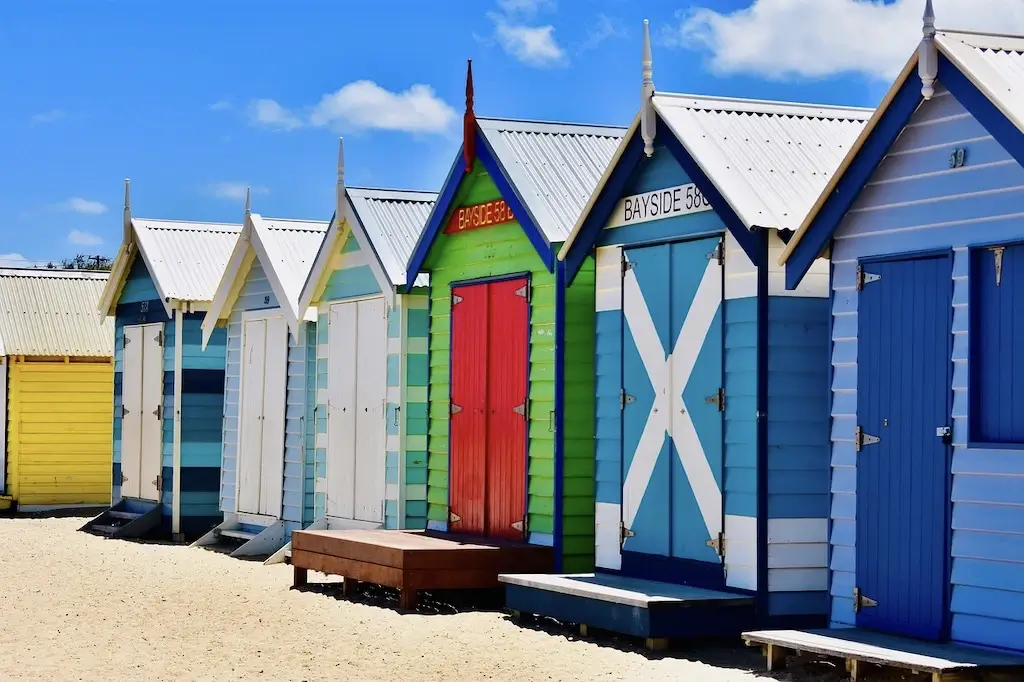
The best place to start your solo travel in Australia is in Melbourne. You can fly directly to Melbourne from many of the major international airports around the world. Once you arrive, you can adjust to the welcoming metropolitan environment. Then, you can travel north along Australia’s Eastern Coast.
Alternatively, you could fly into Brisbane and catch a connecting flight to Cairns. From Cairns, you could then travel south along the Eastern Coast.
If you wanted to solo travel New Zealand after touring Australia, it is also preferable to finish your trip on the East Coast. From Sydney, Melbourne or Brisbane, it is only about a 4-hour flight to Auckland.
Australia Solo Travel Itinerary:
How Long to Spend Travelling Australia
The amount of time that you need to solo travel around Australia depends on which route you take.
The East Coast of Australia can take anywhere from 1-3 months to travel. Whilst it can be done in as little as 1 month, you will only get to see the highlights and have to travel via flight. It is best to spend about 2-3 months and stop at smaller destinations along the way.
If you want to travel the East Coast of Australia and also see The Outback (e.g. Darwin, Kakadu and Uluru), you would need about 3-4 months.
If you wanted to see all of Australia, including the East Coast, The Outback and Western Australia, you would need about 4-6 months.
Australia Solo Travel Itinerary:
Costs and Budgeting
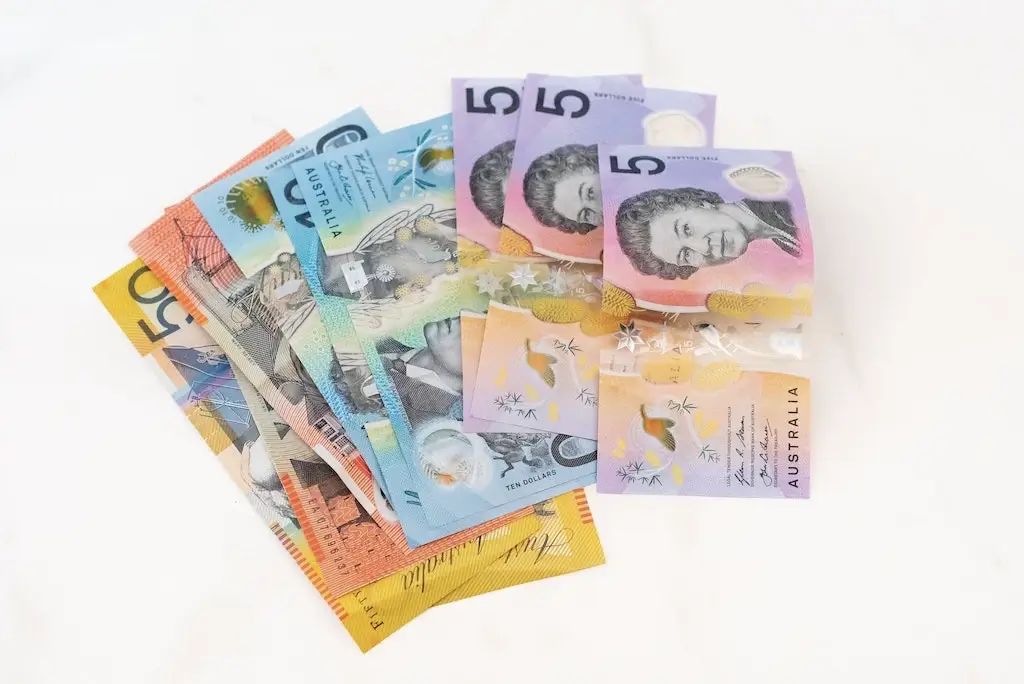
On a backpacker budget, solo travellers can visit Australia for an average cost of $115 per day. On this budget, you would be staying in hostel dorm rooms, preparing most of your own meals, enjoying up to three alcoholic drinks per night, visiting mostly free or cheap attractions and travelling via public transport and coaches.
On a standard budget, solo travellers can visit Australia for an average cost of $275 per day. On this budget, you would be staying in private hostel or motel rooms, eating out once or twice a day, enjoying up to five alcoholic drinks per night, visiting one paid attraction per day and travelling via public transport and domestic flights.
On a luxury budget, solo travellers can visit Australia for an average cost of $550 per day. On this budget, you would be staying in hotels or Airbnb rentals, eating all of your meals out, enjoying a bottle of wine or two per night, visiting two or more paid attractions per day and travelling via Uber, car rental, train or flight.
The average daily costs in the table below are in AUD.
| $AUD | Accommodation | Food | Alcohol | Attractions | Transportation | Average Daily Cost |
| Backpacker | $35 | $25 | $15 | $30 | $15 | $115 |
| Standard Solo Traveller | $100 | $50 | $25 | $50 | $50 | $275 |
| Luxury Solo Traveller | $200 | $100 | $50 | $100 | $100 | $550 |
In Australia, the currency used is the Australian dollar ($ AUD).
Solo travellers can use the following rates (based on a 5-year average) when performing rough conversions:
- $1 AUD = $0.70 USD
- $1 AUD = £0.50 GBP
- $1 AUD = €0.60 EUR
- $1 AUD = $0.90 CAD
- $1 AUD = ¥0.90 JPY
For the most recent conversion rate, use an online currency converter.
Australia Solo Travel Itinerary:
Packing List
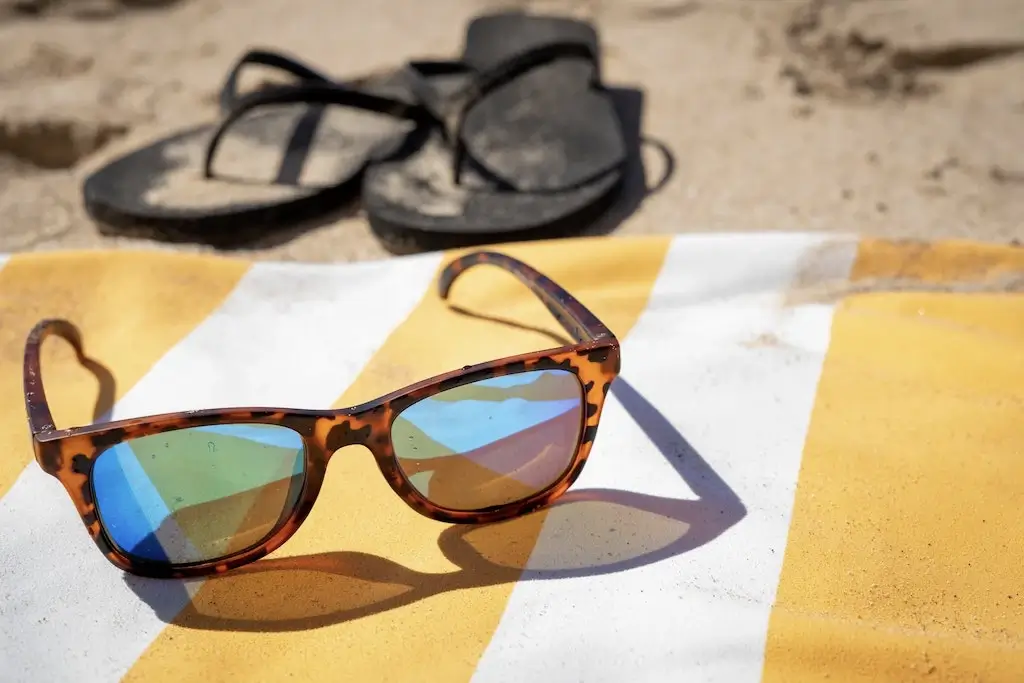
There are ten essential items that you must add to your solo travel packing list for Australia:
- Flip-flops: The staple footwear of most Australians. Flip flops will prevent you from burning your feet on the scorching hot pavements and beaches in summer.
- Swimsuit: You’ll spend the majority of your solo travel in Australia swimming on coastal beaches or in Outback swimming holes. Bring a good pair of swimmers.
- Beach towel: In summer, the sand on the beach in Australia can reach temperatures of over 50℃ (122℉) and cause burns. Protect your skin with a beach towel.
- Mosquito repellent: Mosquitos are a problem all over Australia, particularly in the tropical north where they can transmit diseases. Prevent bites with repellent.
- Hydrocortisone anti-scratch cream: You will inevitably be bitten by mosquitos in Australia. Calm the itching with hydrocortisone cream.
- Australian adapter: You have to use a plug-type I adaptor to power your appliances when you solo travel in Australia and New Zealand.
- Plastic bags: After a trip to the beach, carry your wet clothes around in a plastic bag until you can dry them off that night.
- Sunscreen: In Australia, you can suffer from sunburn in as little as ten minutes. Always slip, slop and slap before enjoying the sun.
- Hat: Sunscreen alone is not always enough to protect your skin from the harsh sun in Australia. Protect your face and neck with a hat.
- Pullover: It’s not always scorching hot in Australia. Temperatures often dip below 0℃ (32℉) in the southern states during winter. Wrap up, particularly at night.
Don’t leave anything behind. Before travelling Australia alone, use my solo travel packing list for males or solo travel packing list for females.
Australia Solo Travel Itinerary:
Safety
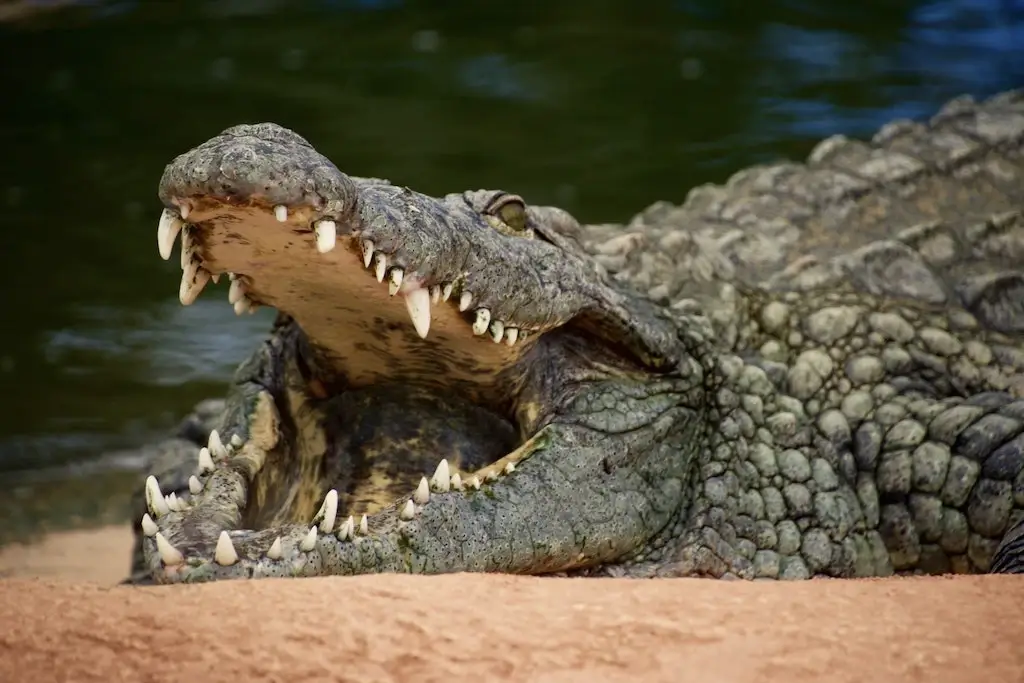
Is Australia safe to travel alone?
Solo travel in Australia is very safe for both females and males. Scams, theft and assault are rare.
Call 000 if you ever need emergency assistance. Cities and towns are patrolled by police and ambulance services are fast to respond.
However, solo travellers should still remain cautious of the following dangers.
Wildlife
Snakes are active in Australia from Spring to Autumn. It is highly unlikely that you will come across a snake during your solo travels. Try to avoid them by making noise, wearing covered footwear and sticking to well-used trails when bushwalking. If you do come across a snake, back away without taking your eyes off it.
Spiders are a concern in Australia throughout the year. You will likely come across spiders during your solo travels. Avoid spiders by shaking out your shoes and clothing before putting them on. Never reach into piles of foliage or places where spiders may live.
In the north of Australia, you need to be aware of crocodiles and jellyfish. Never swim at the beach or in fresh water sources unless there is signage indicating that it is safe to do so. Avoid approaching the edge of the water and keep your distance from crocodile slide marks. Crocodiles are stealth predators and very fast runners over short distances.
Sharks are rarely a danger to swimmers in Australia. However, you can reduce your risk of encountering a shark by swimming close to the shore and between the flags at patrolled beaches. Avoid swimming at dusk or dawn. If you do see a shark, leave the water as quickly and calmly as possible.
Mosquitos are a health risk and can spread disease in Australia (particularly in northern Queensland). Protect yourself when solo travelling by covering up with long-sleeve tops and pants when outside. Apply repellent to exposed skin. Mosquitoes are worst at dusk and dawn.
Heat and sun
During summer, temperatures in Australia can reach more than 45℃ (113℉). You must stay well hydrated to avoid heat stroke. Try to drink about 2.5L (0.5 gals) of water per day whilst you solo travel.
Australia also has some of the highest levels of UV radiation in the world. Your skin can burn in as little as ten minutes if you don’t properly protect yourself from the sun. Always wear sunscreen when spending more than half an hour outside. On particularly hot days, try to cover up with a hat and long sleeves.
Swimming
One of the biggest dangers to tourists in Australia is drowning whilst swimming. Whilst Australia’s beaches are beautiful, the surf is powerful and strong currents can be deadly. Only go swimming in Australia if you are a confident swimmer. And only swim on beaches that are patrolled by lifeguards, staying between the red and yellow flags.
As mentioned above, you also need to be cautious of crocodiles, jellyfish and sharks when swimming in Australia. Always read the safety signage.
Driving
The biggest danger to tourists in Australia is driving and road safety. Drivers often get tired because of the long distances between destinations.
If you plan on driving whilst you solo travel in Australia, break long journeys into small chunks. Stop for a day or two in the regional towns between the major destinations.
Also, ensure that you have filled your car with enough fuel for the journey. Fuel stations can be few and far between in Australia, particularly in the outback.
Solo female safety
Solo female travellers in Australia should generally feel safe throughout their trip. However, as per usual, you should follow these solo travel safety tips.
Less than 1.5% of female travellers in Australia report witnessing or experiencing harassment, abuse or assault during their stay (according to the data above). However, young females as a demographic tend to suffer the most harassment.
See this article on solo travel safety in Australia for more information.
Australia Solo Travel Itinerary:
Visas and Entry Requirements
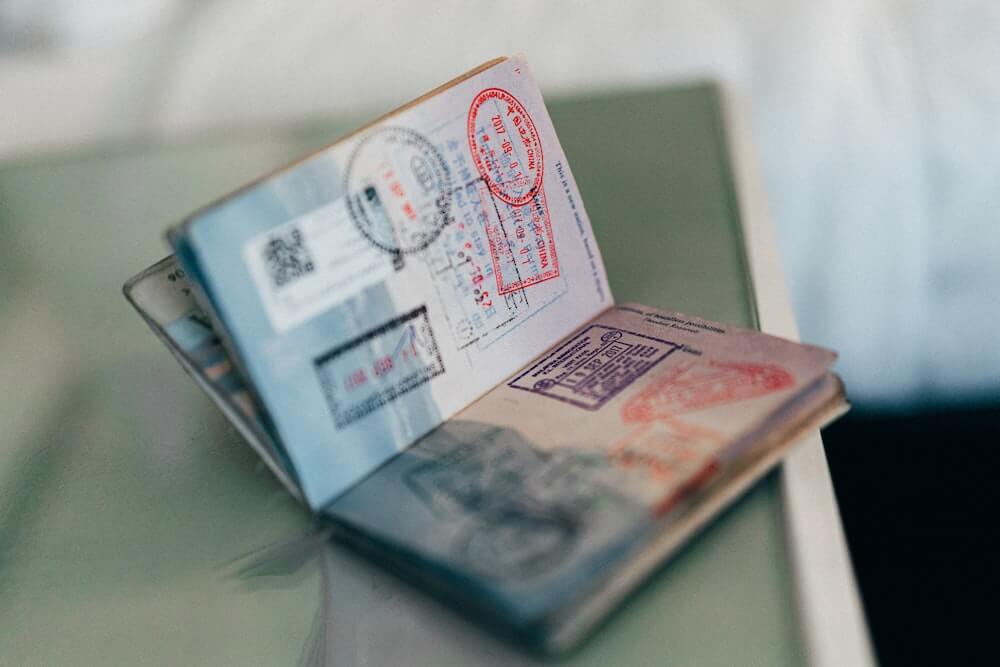
International tourists will need a valid visa to enter Australia. You must apply for a visa before leaving your home country. You’ll also need to meet the designated financial and medical requirements and maintain health insurance for the duration of your trip.
There are several different types of Australian tourist visas. The visa that you apply for will depend on the length of your solo travel in Australia, your passport, your age and whether or not you want to work whilst you travel:
- Visitor visa (600): Visit Australia for tourism for up to three months (or up to 12 months in certain circumstances). Open to all nationalities.
- Electronic Travel Authority visa (601): Visit Australia as often as you want in a 12-month period. You can stay up to 3 months each time you enter Australia. Only available to certain nationalities.
- Working Holiday Visa (417): People aged 18 to 30 years old (or 35 years old for some countries) can visit Australia for up to 12 months and do short-term work to fund their trip. Can only be used once but you can apply for a second Working Holiday visa if you do three months of specified work. Only available to certain nationalities.
Related Posts
More Solo Travel Guides and Tips on Nomadic Yak
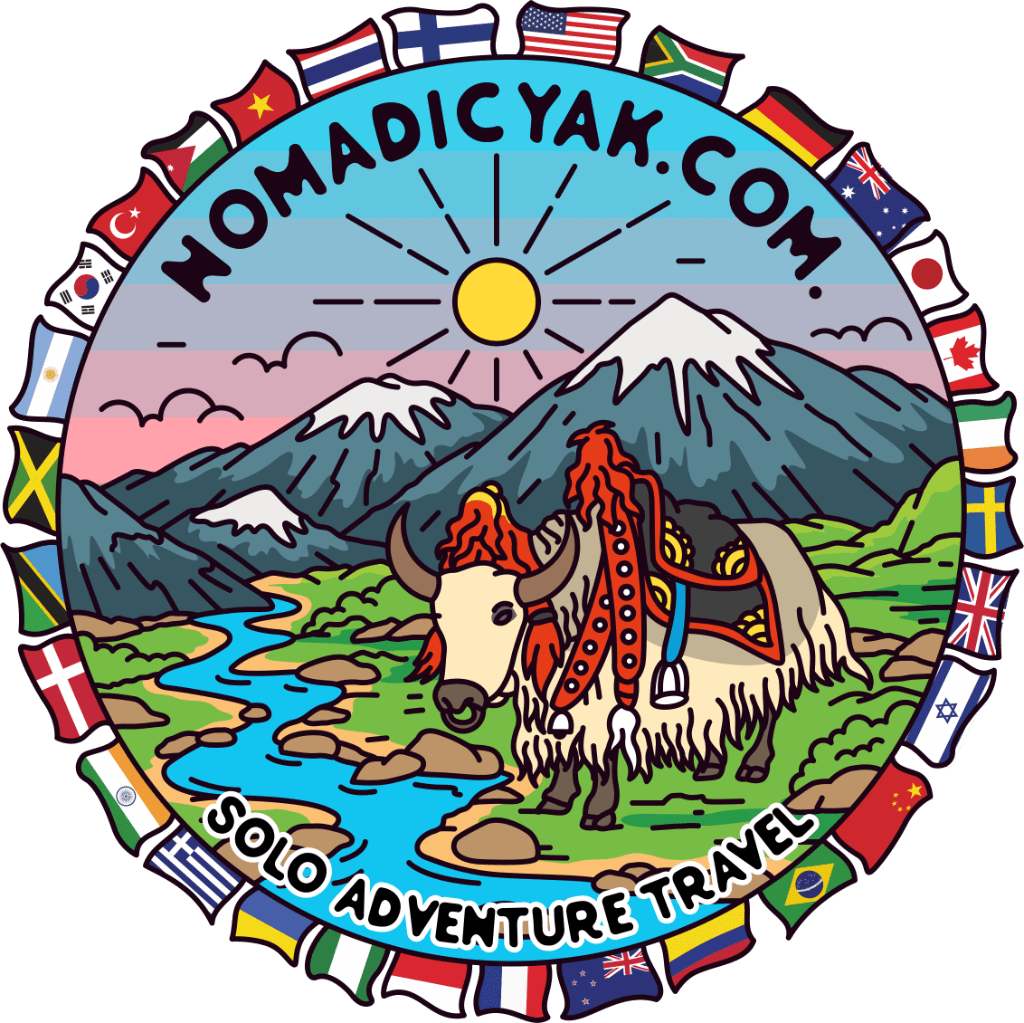
You now know almost everything you need to know about travelling solo to Australia!
Nomadic Yak helps solo travellers to plan journeys that are adventurous and authentic.
Every article is written by me, Harry Dale. I’ve travelled to 40+ countries over the last 5 years – alone.
For even more information about solo travel in Australia, see our solo travel tips.
We also have destination guides to help you plan solo travel in nearby countries such as New Zealand.

